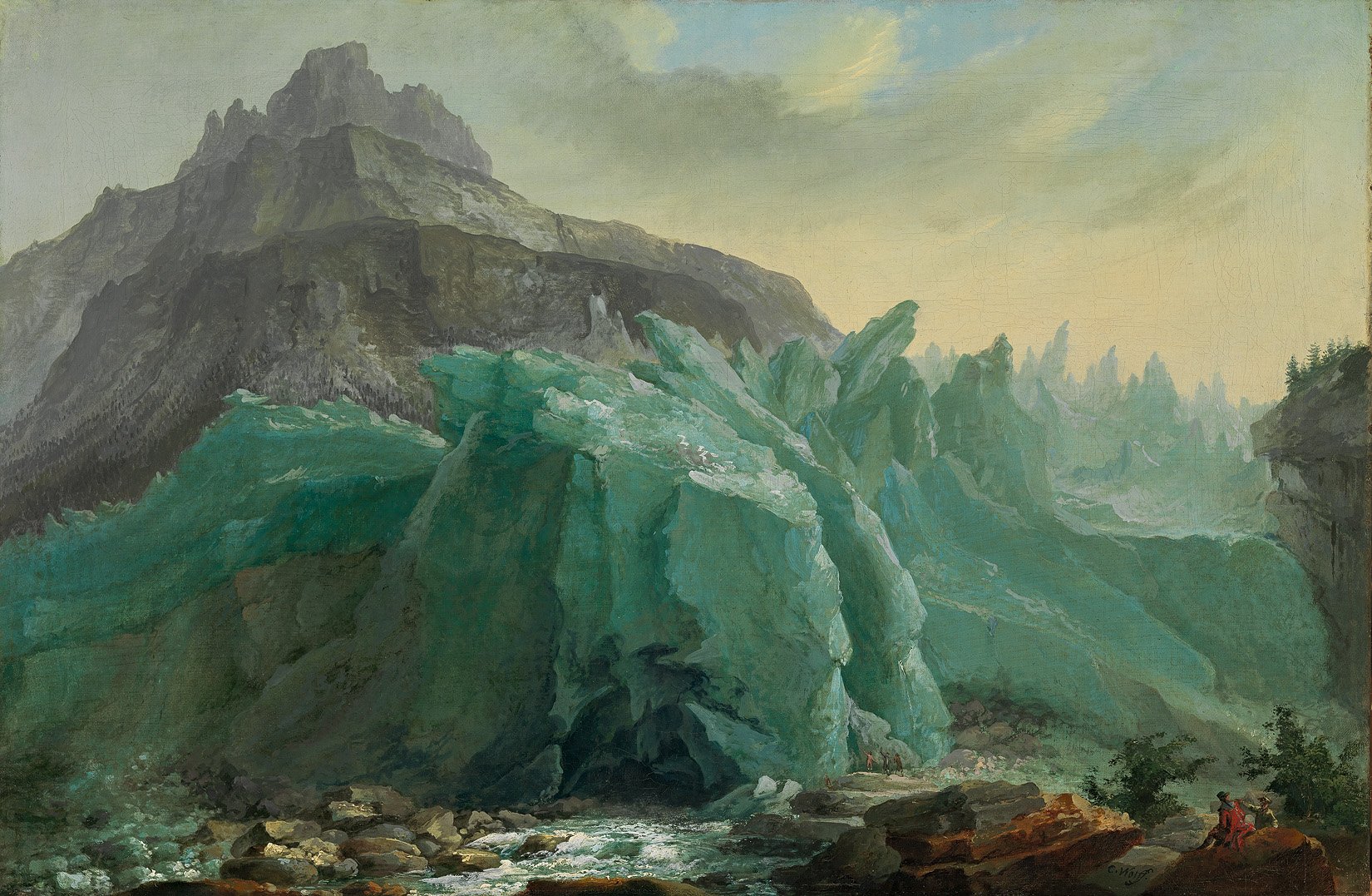Caspar Wolf
The Lower Grindelwald Glacier with Lütschine and the Mettenberg, 1774

Caspar Wolf
The Lower Grindelwald Glacier with Lütschine and the Mettenberg, 1774
Kunst Museum Winterthur, Stiftung Oskar Reinhart, Ankauf, 1947
Foto: SIK-ISEA, Zürich (Philipp Hitz)
Whereas the Swiss Alps at the end of the Baroque period were still considered as an inaccessible place of horror, where the dreaded Draco Helveticus committed his monstrous deeds, and where hardly any researcher, painter, let alone a tourist got lost, this perception changed for good with the Bernese universal scholar Albrecht von Haller. In his poem The Alps, published in 1732, he praised the mountains as an earthly paradise and a refuge of liberty.
Shaped by new knowledge of the mountains, which now were being explored and researched, with his unique view of the powerful natural setting, Caspar Wolf set a landmark in European landscape painting. Spurred on by the spirit of the Enlightenment, he embarked upon daring mountain tours, prominently depicting glaciers, peaks, canyons and waterfalls. Never before had a painter, packed with canvas, easel and scientific instruments, penetrated so far into the mountains, never before had a painter captivated the visual experience so directly on canvas as Caspar Wolf. He found a new visual expression for these beasts of nature – an accomplishment that would not be achieved again until Ferdinand Hodler.
The range of Swiss alpine painting can be admired in the Kunst Museum Winterthur in a way that is hard to find in any other Swiss museum. It begins with Felix Meyer, continues with Johann Ludwig Aberli, leading up to Caspar Wolf as its main representative, as well as his successors Peter Birmann and Johann Jakob Biedermann until François Diday and Alexandre Calame.


